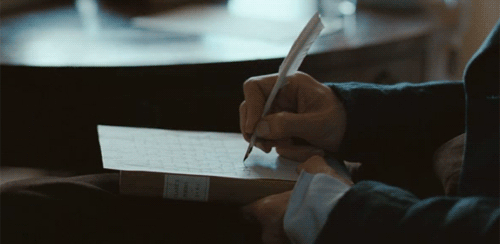The Enlightenment (Neoclassical) Period (1660-1790 CE)
INTRODUCTION TO THE NEOCLASSICAL PERIOD
"Neoclassical" refers to the increased influence of Classical literature in these centuries. The Neoclassical Period is also called the "Enlightenment" due to the increased reverence for logic and disdain for superstition. The period is marked by the rise of Deism, an intellectual backlash against earlier Puritanism, and America's revolution against England.
Literary neoclassicism is noted for attempts to imitate the style of the Romans and Greeks. Writing from this period is noted for its accuracy and order, as well as its direct and clear structure. Writers sought to portray their characters as flawed, and very human, something that’s today seen in stark contrast to previous Renaissance attitudes in which humankind was depicted in God’s image– as perfect. The writers and artists of the period emphasized control and restraint, something that spilled over into politics at the time. By using restraint, the poets, novelists, and playwrights believed that they could imitate the structures of Greco-Roman literary works. The writers of the period most commonly engaged with satire, essays, fables, rhyming poems with couplets, parodies, and more.
- Valued common sense and clarity.
- Structures are well-ordered.
- Content is accurate and believable.
- Characters are portrayed realistically.
- Showed humankind to be flawed.
- Characters are conservative and controlled.
- Influenced by Greco-Roman writing and philosophy.
SUBCATEGORIES OF THE NEOCLASSICAL PERIOD
I. Restoration Period (1660-1700)
This period marks the British king's restoration to the throne after a long period of Puritan domination in England. Its symptoms include the dominance of French and Classical influences on poetry and drama. Sample writers include John Dryden, John Locke, Sir William Temple, and Samuel Pepys, and Aphra Behn in England. Abroad, representative authors include Jean Racine and Molière.
II. The Augustan Age (1700-1750)
This period is marked by the imitation of Virgil and Horace's literature in English letters. The principal English writers include Addison, Steele, Swift, and Alexander Pope. Abroad, Voltaire was the dominant French writer.
III. The Age of Johnson (1750-1790)
This period marks the transition toward the upcoming Romanticism though the period is still largely Neoclassical. Major writers include Dr. Samuel Johnson, Boswell, and Edward Gibbon who represent the Neoclassical tendencies, while writers like Robert Burns, Thomas Gray, Cowper, and Crabbe show movement away from the Neoclassical ideal. In America, this period is called the Colonial Period. It includes colonial and revolutionary writers like Ben Franklin, Thomas Jefferson, and Thomas Paine.
POETS IN NEOCLASSICAL ERA
- John Dryden
- Alexander Pope
- Thomas Gray
- William Blake
- Robert Burns
 |
William Blake |
.jpeg) |
Alexander Pope |
.gif)



Comments
Post a Comment